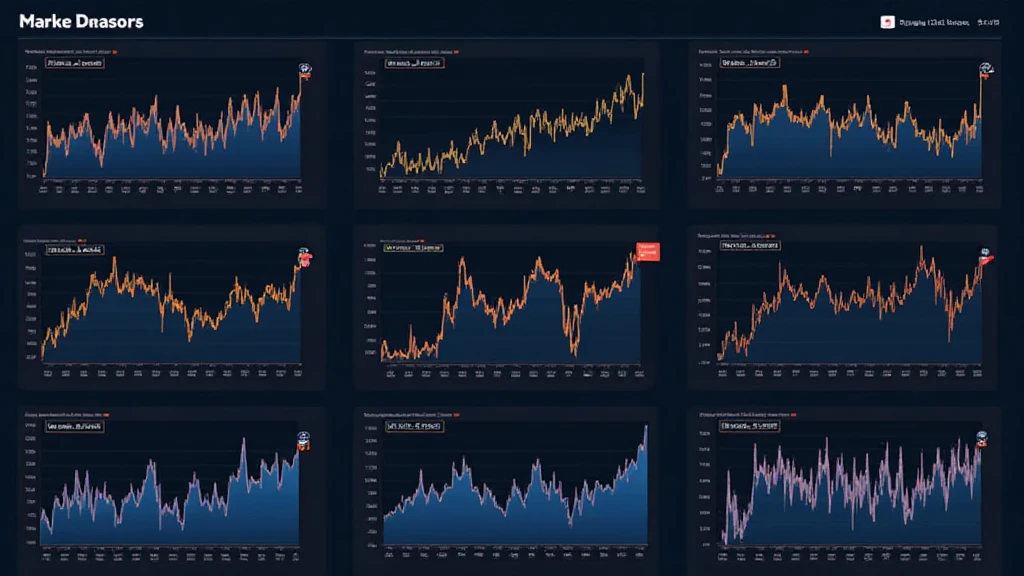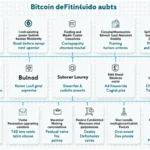Bitcoin Market Drivers Analysis: Understanding the Forces Behind BTC Price Shifts
With over $4 billion lost to DeFi hacks in 2024, the cryptocurrency market continues to be unpredictable. Understanding the Bitcoin market drivers is crucial for investors looking to navigate these turbulent waters effectively. In this analysis, we will explore the key factors influencing Bitcoin prices, from economic indicators to sentiment metrics.
Market Sentiment and Its Impact
The emotional state of the investors significantly affects Bitcoin prices. During market euphoria, prices tend to spike, while fear can lead to steep declines. Data shows that in 2024, Bitcoin saw a 30% increase during the initial phases of the ETF hype, illustrating how sentiment can drive short-term price swings. It’s akin to how waves on the ocean fluctuate based on the weather; similarly, the crypto market is heavily influenced by external perceptions.
- Fear and Greed Index: This indicator measures the market’s sentiment. When the index is high, it signifies over-optimism which often precedes corrections.
- Social Media Trends: Platforms like Twitter and Reddit see substantial discussions that influence potential buyers and sellers, driving price movements.
Institutional Investment: A Double-Edged Sword
As institutional interest in Bitcoin increases, so does its volatility. For instance, major firms like MicroStrategy have invested heavily in Bitcoin, leading to fluctuations based on corporate buying. According to reports, up to 40% of Bitcoin’s market capitalization is now held by institutional investors. This creates a feedback loop; more institutional investment increases legitimacy and price, but it also attracts scrutiny.

- High-profile Endorsements: Positive endorsements from financial leaders can spike prices, whereas negative remarks can lead to declines.
- ETF Approvals: The introduction of Bitcoin ETFs (Exchange-Traded Funds) can stabilize prices but also contribute to volatility based on regulatory news.
Regulatory Developments: The Compliance Tango
Global regulatory frameworks play a pivotal role in shaping the Bitcoin landscape. With various countries adopting different stances, the volatility is often tied to regulatory news. For instance, in Vietnam, where crypto adoption is burgeoning, regulatory frameworks are being developed to provide clarity and security.
- Government Policies: Regulatory acceptance in countries can boost confidence and investment, while restrictions can lead to rapid sell-offs.
- Taxation Regulations: Recent proposals in Vietnam to regulate and tax crypto transactions could stimulate responsible trading, fostering a healthier market.
Technological Innovations and Their Influence
Technological advancements contribute significantly to Bitcoin’s price. Each upgrade or security improvement can sway investor confidence. For example, the introduction of the Lightning Network aimed to enhance transaction speeds brought renewed investor interest. As per recent studies, upgrades can result in a temporary price increase of up to 15% as traders react positively to potential efficiency gains.
- Blockchain Technology: Innovations such as increased scalability and security measures can add long-term value.
- Smart Contracts: Understanding how smart contracts work improves investor insights, directly affecting Bitcoin adoption rates.
Global Economic Factors: A Ripple Effect
Global economic conditions significantly influence Bitcoin trends. Factors like inflation, currency devaluation, and geopolitical tensions can increase Bitcoin’s appeal as a hedge. For instance, soaring inflation rates in multiple countries, including emerging markets like Vietnam, have led many to seek refuge in cryptocurrencies.
- Inflation Rates: Countries experiencing high inflation rates saw significant upticks in Bitcoin investments, as citizens look for value preservation.
- Currency Devaluation: National currency issues often drive demand for alternative stores of value like Bitcoin.
Looking Ahead: What Does 2025 Hold?
As we approach 2025, Bitcoin appears to be on a collision course with mainstream acceptance. Predictions indicate determination from both users and regulators to stabilize and grow the market. According to Chainalysis, Bitcoin transaction growth in Vietnam is forecasted to rise by 50% as regulations provide more clarity.
- Emerging Markets: Increased adoption in regions where traditional finance fails opens doors for Bitcoin integration.
- Technological Adoption: Further technological advancements are likely to encourage more traditional investors as barriers are lowered.
In conclusion, comprehending the myriad factors that influence the Bitcoin market is essential for any investor. From regulatory developments to institutional investments, understanding these driving forces will enhance your ability to make informed decisions in the transformative landscape of cryptocurrency. For more insights and detailed information regarding investment strategies and market analysis, visit HIBT.
Not financial advice. Consult local regulators.
Author: Dr. John Smith, a blockchain researcher and consultant with over 15 publications in the field of cryptocurrency and a lead auditor for multiple high-profile digital asset projects.







